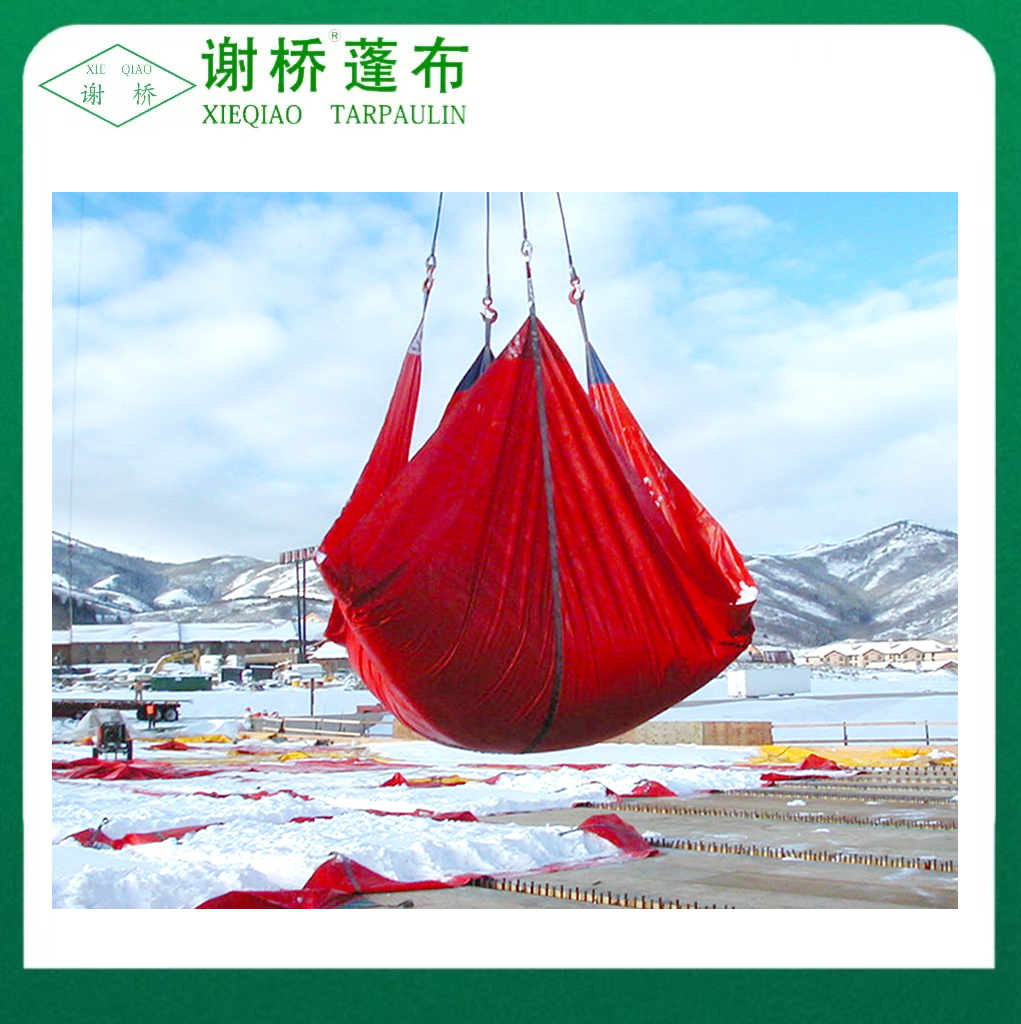Specializing in all kinds of custom tarpaulins Custom Tarpaulin Product Manufacturers
 2025.10.24
2025.10.24
 Industry News
Industry News
Winter snow accumulation can create significant challenges for homeowners, commercial property managers, and municipal maintenance crews. Snow and ice obstruct driveways, parking lots, sidewalks, and other critical surfaces, making accessibility difficult and increasing the risk of accidents. Traditionally, snow removal has relied on shovels, plows, or snow blowers—methods that are often labor-intensive, time-consuming, and costly. In recent years, snow lifting tarps have emerged as an innovative solution that streamlines the snow removal process, saving time, reducing labor, and improving safety. This article explores what snow lifting tarps are, how they work, and the benefits they bring to winter snow management.
A snow lifting tarp is a heavy-duty, durable sheet made from materials such as reinforced polyethylene, vinyl, or canvas. These tarps are designed to be spread over snow-covered surfaces, allowing users to lift and relocate large amounts of snow quickly and efficiently. The concept is simple: instead of shoveling snow in small increments, the tarp serves as a platform to collect snow and transport it to a designated dumping area with minimal effort.
Snow lifting tarps vary in size, thickness, and design features, allowing them to be customized for residential driveways, sidewalks, commercial parking lots, and even industrial applications. Some models include reinforced edges and handles, making it easier for multiple people to grip and lift the tarp simultaneously. Others are designed to accommodate machinery attachments, enabling mechanized snow removal for larger areas.
The operation of snow lifting tarps is straightforward, yet highly effective. The process generally involves the following steps:
This method eliminates repetitive shoveling, reduces strain on the body, and can clear large areas much faster than traditional methods.
When selecting snow lifting tarps, it is important to consider several critical features:
Choosing the right tarp requires balancing size, durability, and handling requirements based on the typical snowfall and the area that needs clearing.

Snow lifting tarps provide several advantages over conventional snow removal methods:
A snow lifting tarp allows users to remove large volumes of snow at once, significantly reducing the time needed to clear driveways, sidewalks, or parking lots. Instead of repetitive shoveling, snow can be pushed or loaded onto the tarp and moved in a single step.
Traditional snow removal can be physically demanding, often leading to back injuries, muscle strain, and fatigue. By distributing the weight across the tarp and enabling coordinated lifting, snow lifting tarps reduce the physical effort required, making it safer for users of all ages.
Snow lifting tarps are relatively inexpensive compared to heavy snow removal equipment. For residential use, a single tarp can replace multiple hours of manual labor or reduce the need for plowing services. For commercial properties, tarps can complement existing snow removal operations, reducing overtime and equipment usage.
Snow lifting tarps can be used in a wide range of settings—from small residential driveways to large commercial parking lots. Some tarps are compatible with machinery, enabling mechanized snow transport for industrial-scale operations.
Clearing snow efficiently prevents hazardous conditions, such as ice buildup and slippery surfaces. By moving snow to appropriate locations, snow lifting tarps reduce the risk of slip-and-fall accidents for both residents and visitors.
The versatility of snow lifting tarps makes them suitable for numerous winter applications:
In all cases, snow lifting tarps help maintain functionality and safety during harsh winter conditions.
To maximize the effectiveness and lifespan of snow lifting tarps, follow these best practices:
When selecting a snow lifting tarp, consider:
Choosing the correct tarp ensures efficient snow removal and reduces wear and tear on both the tarp and the users.
Snow lifting tarps represent a simple yet transformative approach to winter snow management. By allowing users to collect, transport, and dispose of snow with minimal physical effort, these tarps improve efficiency, safety, and cost-effectiveness. From residential driveways to large commercial or municipal areas, snow lifting tarps provide a practical solution to the perennial challenge of snow removal. When combined with proper selection, handling, and maintenance, they offer a reliable, versatile, and durable tool that simplifies winter cleanup and enhances overall safety during snowy conditions.
By incorporating snow lifting tarps into winter maintenance routines, property owners and managers can save time, reduce labor costs, and ensure safe, accessible spaces throughout the season.